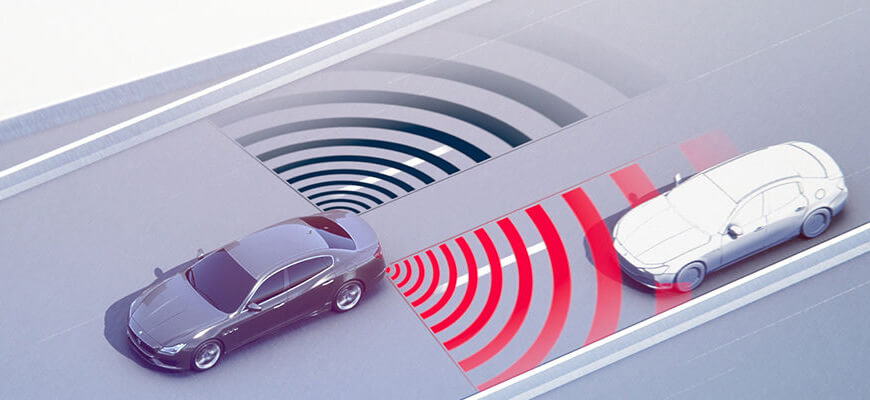In an era where automobiles are increasingly packed with cutting-edge technology and safety features, one area that still poses a significant risk on the road is blind spots. These elusive areas surrounding a vehicle are a leading cause of accidents and near-miss incidents. Fortunately, aftermarket blind spot monitor solutions have emerged as a promising way to enhance road safety, giving drivers an extra set of eyes to navigate the complex world of traffic.
The Blind Spot Challenge
The concept of blind spots is simple: they are areas around a vehicle that cannot be directly observed by the driver through mirrors or by turning their head. These hidden zones, which vary in size and shape depending on the vehicle’s design, are hotspots for accidents. When drivers change lanes or make turns without properly checking their blind spots, they run the risk of colliding with other vehicles, pedestrians, or cyclists.
The challenge of blind spots is not limited to any specific type of vehicle; it affects everything from compact sedans to massive trucks. Manufacturers have made strides in incorporating blind spot monitoring systems into newer vehicles, but the majority of cars on the road lack this feature. This is where aftermarket blind spot solutions come into play.
Aftermarket Blind Spot Solutions: The Basics
Aftermarket blind spot solutions are additional safety features that can be added to a vehicle after purchase. They are designed to detect objects or vehicles in the driver’s blind spots and provide warnings to alert the driver to potential hazards. These solutions typically include radar or ultrasonic sensors, cameras, and displays.
Types of Aftermarket Blind Spot Solutions
- Blind Spot Monitoring (BSM): BSM systems use sensors, typically located on the sides of the vehicle, to monitor the blind spots. When a vehicle enters the blind spot, the system alerts the driver through visual or auditory cues. Some advanced BSM systems can even intervene by applying slight steering or braking inputs to prevent collisions.
- Rearview Cameras: While not exclusively focused on blind spot detection, rearview cameras are a common aftermarket addition that can help drivers see what’s behind and beside their vehicle when reversing or changing lanes. These cameras are often integrated into the vehicle’s infotainment system.
- Blind Spot Mirrors: Another simple but effective aftermarket solution is the blind spot mirror. These convex mirrors are installed on the side mirrors of the vehicle, providing a wider field of view and reducing blind spots. They are an affordable option for enhancing safety.
- Audible Alerts: Some aftermarket blind spot solutions use audible alerts, such as beeping sounds, to notify drivers when a vehicle is in their blind spot. These alerts can be particularly useful for drivers who find visual cues distracting.
Benefits of Aftermarket Blind Spot Solutions
- Enhanced Safety: The primary benefit of aftermarket blind spot solutions is improved safety. By providing additional awareness of surrounding vehicles and objects, these systems reduce the risk of accidents caused by blind spots.
- Cost-Effective: Retrofitting a vehicle with aftermarket blind spot solutions is often more affordable than purchasing a new vehicle with built-in blind spot monitoring. This makes it a practical choice for drivers looking to enhance safety without breaking the bank.
- Compatibility: Aftermarket blind spot solutions are designed to be compatible with a wide range of vehicles, making them accessible to most drivers. Whether you own a compact car or a larger SUV, there’s likely an aftermarket solution available for your vehicle.
- Customization: Drivers can choose from various aftermarket solutions to suit their preferences and needs. Whether they prefer visual alerts, audible warnings, or a combination of both, there’s a solution that can be tailored to their liking.
Considerations When Installing Aftermarket Blind Spot Solutions
While aftermarket blind spot solutions offer numerous advantages, it’s important for drivers to consider a few key factors before installation:
- Professional Installation: Many aftermarket blind spot solutions require professional installation to ensure proper placement and functionality. DIY installation may lead to suboptimal performance or even damage to the vehicle.
- Compatibility: Ensure that the chosen aftermarket solution is compatible with your specific vehicle make and model. Consult with a reputable installer or manufacturer to confirm compatibility.
- Warranty and Support: Research the warranty and support options for the aftermarket solution you choose. A reliable warranty can provide peace of mind and protection against potential defects.
- Maintenance: Like any technology, aftermarket blind spot solutions may require periodic maintenance and updates to ensure they continue to work effectively.
In conclusion, aftermarket blind spot detection solutions are a valuable addition to any vehicle, offering enhanced safety and peace of mind for drivers. While they cannot replace responsible driving habits, they serve as an extra layer of protection, reducing the risk of accidents caused by blind spots. As technology continues to advance, these aftermarket solutions will likely become even more sophisticated, further contributing to road safety. So, remember: when it comes to your safety on the road, it’s always better to be safe than sorry.
